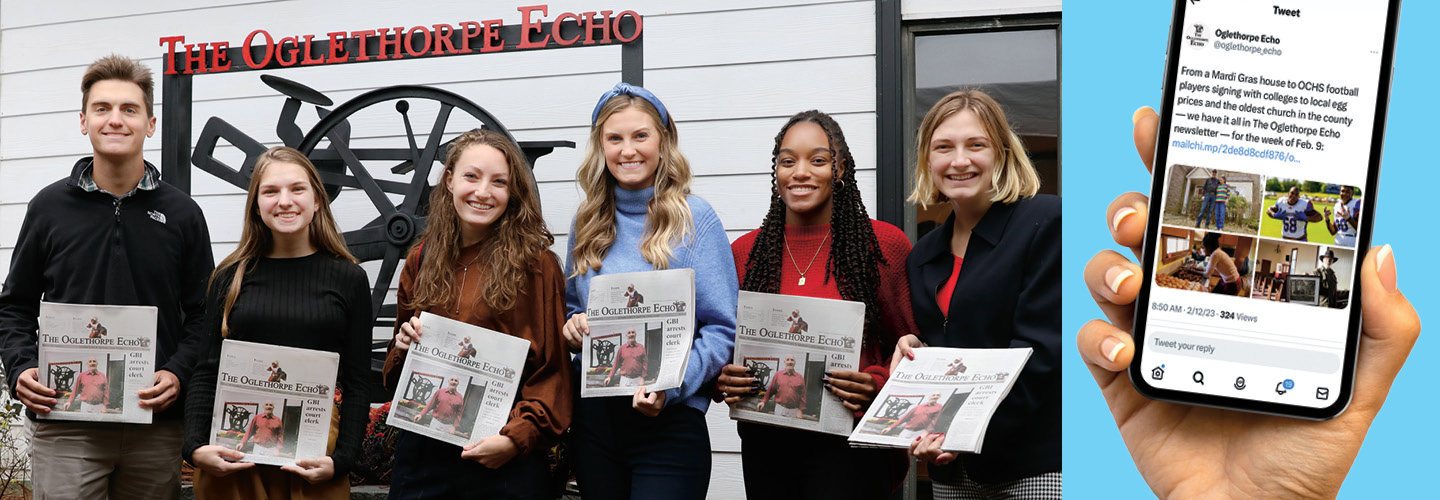When Aly Hertzog signed up for a journalism class at the University of Georgia, she never imagined she’d soon be taking over a newspaper.
But then the editor and publisher of The Oglethorpe Echo, a local weekly paper, retired in 2021, and there was no one to take his place. Rather than let the paper shut down, like so many other community news outlets have in recent decades, local journalists and school officials concocted a plan for a University of Georgia class to step in. Every semester, 20 students would write articles, take photos, and manage the paper’s website and social media.
“I thought it was going to be the most stressful, worst class of my entire semester,” Hertzog, 23, admitted while taking the class last year. “And it’s actually my favorite. I’ve loved every second of it.”
If you, like many young Americans, get most of your news from social media, you might wonder why keeping a local paper alive is important. Although you may hear about national issues on Instagram and TikTok, those platforms likely won’t reveal much about what’s happening in your town—the kinds of stories that often have the biggest impact on you and your family. Decisions made locally can affect everything from what you learn at your school to the conditions of the roads you drive on, explains Erica Beshears Perel, director of the Center for Innovation and Sustainability in Local Media at the University of North Carolina.
“The things that affect your day-to-day life,” she says, “are happening on the local level.”
Aly Hertzog signed up for a journalism class at the University of Georgia.
But she never imagined she’d soon be taking over a newspaper.
In 2021, the editor and publisher of The Oglethorpe Echo, a local weekly paper, retired. There was no one to take his place. Many community news outlets have shut down in recent years. Rather than let that happen to the Echo, local journalists and school officials came up with a plan for a University of Georgia class to step in. Every semester, 20 students would write articles and take photos. They would also manage the paper’s website and social media.
“I thought it was going to be the most stressful, worst class of my entire semester,” Hertzog, 23, admitted while taking the class last year. “And it’s actually my favorite. I’ve loved every second of it.”
If you, like many young Americans, get most of your news from social media, you might wonder why keeping a local paper alive is important. You may hear about national issues on Instagram and TikTok, those platforms likely won’t reveal much about what’s happening in your town. But those kinds of stories often have the biggest impact on you and your family. Decisions made locally can affect everything from what you learn at your school to the conditions of the roads you drive on, explains Erica Beshears Perel, director of the Center for Innovation and Sustainability in Local Media at the University of North Carolina.
“The things that affect your day-to-day life,” she says, “are happening on the local level.”

